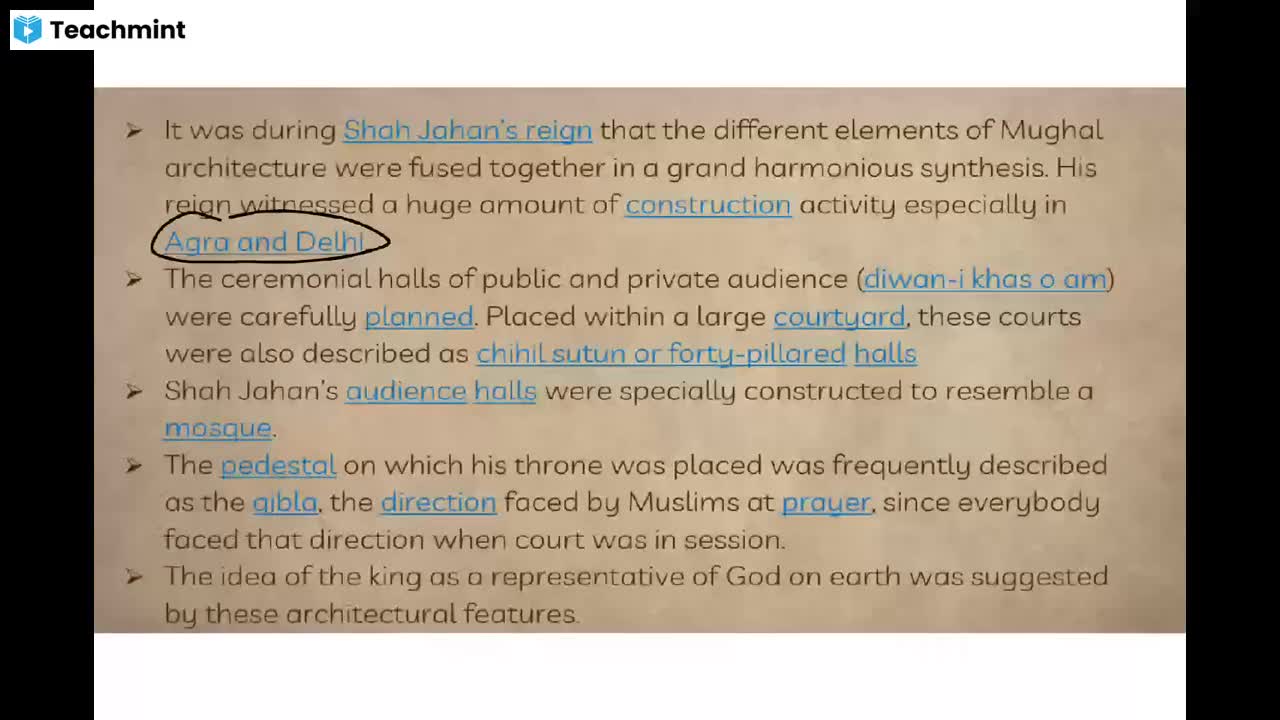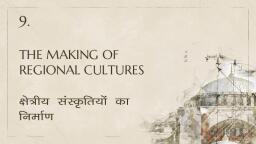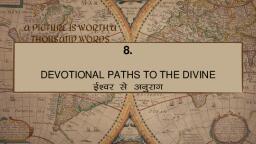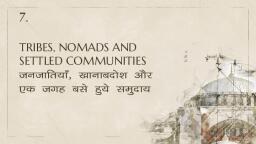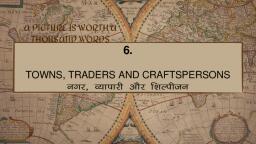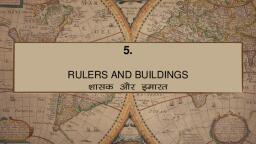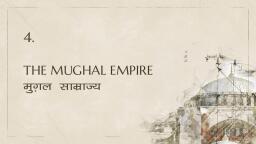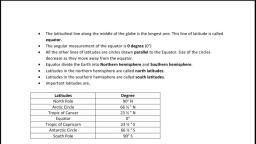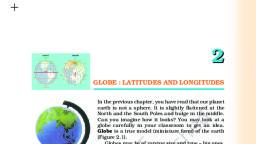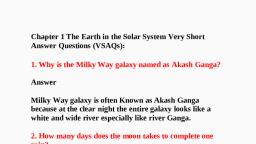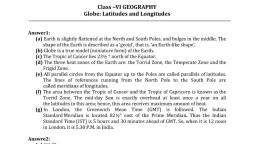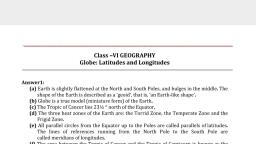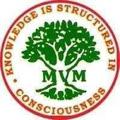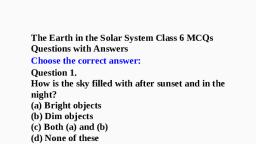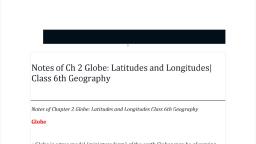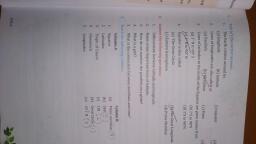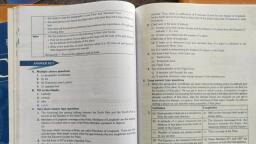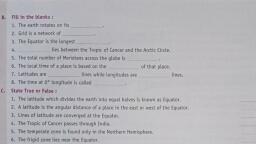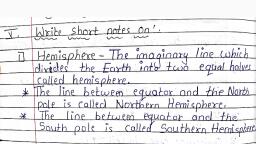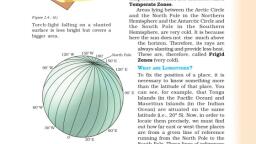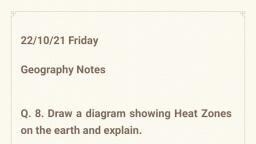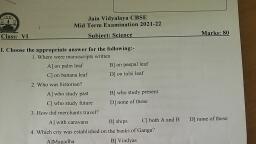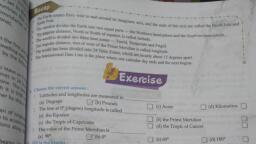Page 1 :
6TH, GEOGRAPHY, CLASS NCERT, CH- 2
Page 2 :
GLOBE : LATITUDES AND LONGITUDES, , , , , , , , GLOBE, AXIS, EQUATOR, PARALLELS OF LATITUDES, IMPORTANT PARALLELS OF LATITUDES, HEAT ZONES OF THE EARTH
Page 3 :
Globe (, , ोब), , our planet earth is not, a sphere. It is slightly, flattened at the North, and the South Poles, and bulge in the, middle. Globe is a true, model (miniature form), of the earth. The globe, is not fixed. It can be, rotated the same way, as a top spin or a, potter’s, wheel, is, rotated.
Page 4 :
Axis, (अ ), Needle is fixed through the globe in a, tilted manner, which is called its axis., Two points on the globe through, which the needle passes are two, poles – North Pole and South, Pole., The globe can be moved around, this needle from west to east just, as the earth moves., The real earth has no such needle., It moves around its axis, which is, an imaginary line.
Page 5 :
Equator (भूम, Imaginary line running on the, globe divides it into two equal, parts. This line is known as the, equator., The northern half of the earth is, known, as, the, Northern, Hemisphere and the southern, half is known as the Southern, Hemisphere the equator is an, imaginary circular line and is a, very important reference point, to locate places on the earth., The equator represents the zero, degree latitude., , रे खा)
Page 6 :
Parallels of latitudes(अ ां शों का समां तर भाग), All parallel circles from the equator up to the, poles are called parallels of latitudes. Latitudes, are measured in degrees., Distance from the equator to either of the, poles is one-fourth of a circle round the, earth, it will measure ¼th of 360 degrees., 90 degrees north latitude marks the North, Pole and 90 degrees south latitude marks, the South Pole., All parallels north of the equator are called, ‘north latitudes.’ Similarly all parallels south, of the equator are called ‘south latitudes.’
Page 7 :
IMPORTANT PARALLELS OF LATITUDES, मह पूण (अ ां शों का समां तर भाग), Besides the equator (0°),, the North Pole (90°N) and, the South Pole (90° S),, there are four important, parallels of latitudes–, (i) Tropic of Cancer (23½°, N) in the Northern, Hemisphere. (ii) Tropic of, Capricorn (23½° S) in the, Southern Hemisphere. (iii), Arctic Circle at 66½° north, of the equator. (iv), Antarctic Circle at 66½°, south of the equator.
Page 8 :
HEAT ZONES OF THE EARTH, (पृ ी के गम े ), Torrid Zone (उ, , किटबं ध), , All latitudes in between the Tropic of Cancer, and the Tropic of Capricorn. This area,, therefore, receives the maximum heat and is, called the Torrid Zone., , Temperate Zones (तापमान े ), The Tropic of Cancer and the Arctic Circle in the, Northern Hemisphere, and the Tropic of Capricorn and, the Antarctic Circle in the Southern Hemisphere, have, moderate temperatures. These are, therefore, called, Temperate Zones.
Page 9 :
Frigid Zones (उदासीन े ), The Arctic Circle and the North Pole in the, Northern Hemisphere and the Antarctic, Circle and the South Pole in the Southern, Hemisphere, are very cold. It is because, here the sun does not rise much above the, horizon. Therefore, its rays are always, slanting and provide less heat. These are,, therefore, called Frigid Zones.
Page 10 :
WHAT ARE LONGITUDES?, To fix the position of a place, it is necessary to know something, more than the latitude of that place for example, that Tonga Islands, (in the Pacific Ocean) and Mauritius Islands (in the Indian Ocean), are situated on the same latitude (i.e., 20° S). Now, in order to, locate them precisely, we must find out how far east or west these, places are from a given line of reference running from the North, Pole to the South Pole. These lines of references are called the, meridians of longitude. and the distances between them are, measured in ‘degrees of longitude.’ Each degree is further divided, into minutes, and minutes into seconds. They are semicircles and, the distance between them decreases steadily polewards until it, becomes zero at the poles, where all the meridians meet.
Page 11 :
Prime Meridian ( धान म ा ), All countries decided that the count should, begin from the meridian which passed through, Greenwich, where the British Royal, Observatory is located. This meridian is called, the Prime Meridian Its value is 0° longitude, and from it we count 180° eastward as well as, 180° westward. The Prime Meridian and 180°, meridian divide the earth into two equal, halves, the Eastern Hemisphere and the, Western Hemisphere.
Page 12 :
WHY DO WE HAVE STANDARD TIME?, The local time of places which are on different meridians, are bound to differ. For example, it will be difficult to, prepare a time-table for trains which cross several, longitudes. In India, for instance, there will be a, difference of about 1 hour and 45 minutes in the local, times of Dwarka in Gujarat and Dibrugarh in Assam. It is,, therefore, necessary to adopt the local time of some, central meridian of a country as the standard time for the, country. In India, the longitude of 82½° E (82° 30'E) is, treated as the standard meridian. The local time at this, meridian is taken as the standard time for the whole, country. It is known as the Indian Standard Time (IST).
Page 13 :
Some countries have a, great longitudinal extent, and so they have adopted, more than one standard, time. For example, in, Russia, there are as many, as eleven standard times., The earth has been divided, into twenty-four time, zones of one hour each., Each zone thus covers 15°, of longitude.
Page 14 :
LONGITUDE AND TIME (दे शां तर और समय), The sun regularly rises and sets every day, and naturally, it is the best timekeeper throughout the world. Local time can be reckoned by the shadow, cast by the sun, which is the shortest at noon and longest at sunrise and, sunset. When the Prime Meridian of Greenwich has the sun at the highest, point in the sky, all the places along this meridian will have mid-day or noon., The earth rotates from west to east .The earth rotates 360° in about 24, hours, which means 15° an hour or 1° in four minutes. Thus, when it is 12, noon at Greenwich, the time at 15° east of Greenwich will be 15 × 4 = 60, minutes, i.e., 1 hour ahead of Greenwich time, which means 1 p.m. But at, 15° west of Greenwich, the time will be behind Greenwich time by one hour,, i.e., it will be 11.00 a.m. Similarly, at 180°, it will be midnight when it is 12, noon at Greenwich.
Page 15 :
THANK YOU



